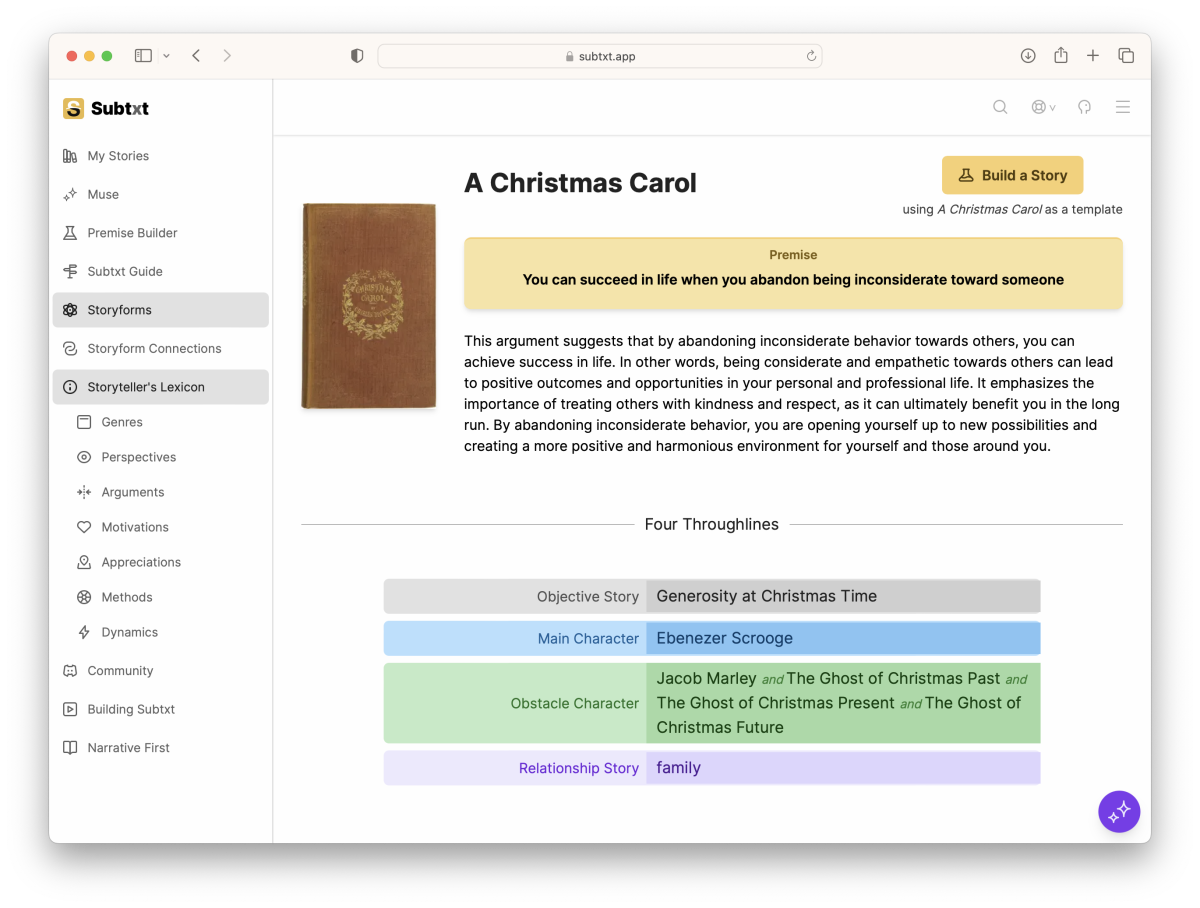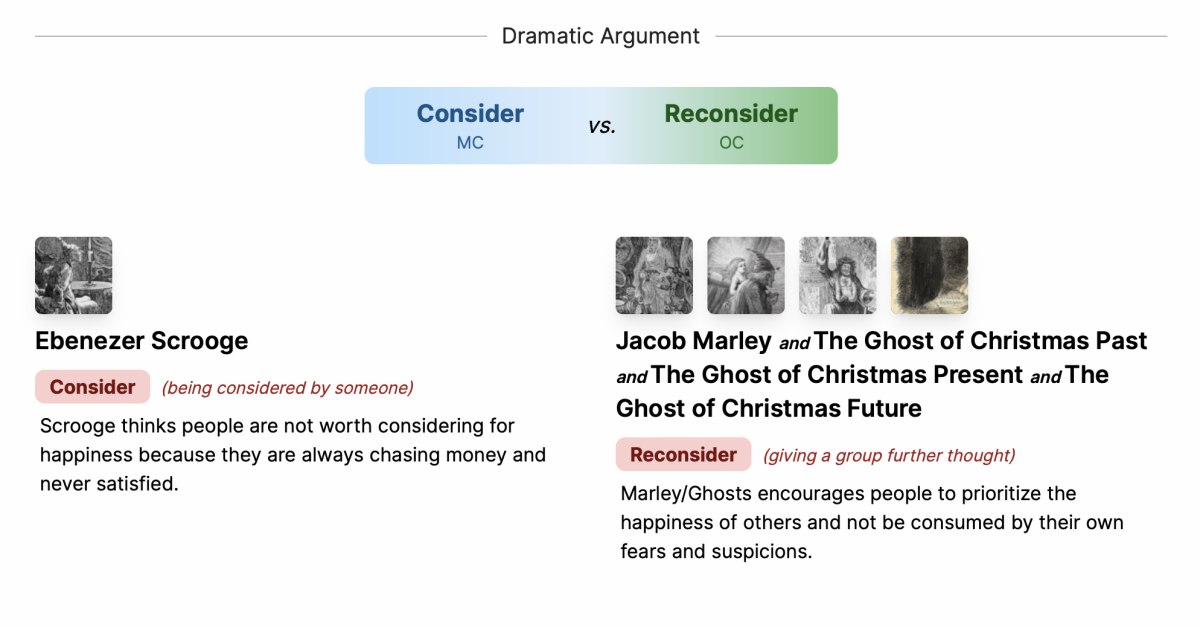
The Dual Perspectives of Main Characters: A Deep Dive into 'A Christmas Carol'
Exploring dual perspectives for richer narratives
In the world of storytelling, understanding the roles and perspectives of characters is crucial. Often, we think of characters in terms of their actions and roles within the plot. However, this approach can sometimes overlook the complexity and depth of these characters. Specifically, we can forget that the Main Character (MC) in a story is not just defined by their actions within the plot, but also by their personal baggage. This is where the concept of the Main Character Throughline comes into play.
The Main Character Throughline is a reflection of the MC's personal baggage, their internal struggles, and their journey of growth or change. It's a perspective that is held by the Player who is the Main Character. But this Player also maintains a functional role in the Objective Story (OS) Throughline, which is the plot of the story. This dual perspective can sometimes be forgotten in the process of developing the MC Throughline, but it's essential to remember for a well-rounded narrative.
Let's delve into the world of Charles Dickens' A Christmas Carol, where we will explore how Ebenezer Scrooge, the Main Character, and the Ghosts, the Obstacle Characters, hold dual perspectives in the story. Their roles contribute not only to their personal journeys but also to the overall plot, providing a rich tapestry of narrative complexity.
Separating the Subjective from the Objective
In the realm of story theory, it's crucial to understand that the Main Character Throughline and the Objective Story Throughline are two distinct entities. They may be held by the same Player, but they do not operate exclusively in one or the other. This concept can be a bit tricky to grasp, so let's use Charles Dickens' A Christmas Carol as an example to illustrate this point.
In A Christmas Carol, Ebenezer Scrooge is not just the Main Character; he also plays the role of the Protagonist in the Objective Story Throughline. His actions in the Objective Story are driven by elements of Consider and Pursuit (the fundamental driving forces of a Protagonist). He is inconsiderate, and he is the one everyone is "pursuing".
On the other hand, the Ghosts are not just Obstacle Characters; they also collectively play the role of the Guardian in the Objective Story Throughline. Their actions are driven by elements of Help and Conscience (also, the fundamental driving motivations of the Guardian Archetype). In addition, they also maintain the Pivotal Element of Reconsider (to balance out Scrooge's Pivotal Element of Consider), which gives them a bit of the Antagonist's role in the objective story (especially the Ghost of Christmas Future).
When the Plot of a Story is about a Character
The Objective Story of A Christmas Carol focuses on Scrooge's lack of generosity (Objective Story Concern of Obtaining and an Objective Story Issue of Approach), with the Goal of the story being for Scrooge to relinquish control and share his wealth. This Objective Story is playing out simultaneously with the Main Character and Obstacle Character Throughlines, even during the "2nd Act" where it seems like it's just Scrooge and the Ghosts interacting.
It's important to remember that the Main Character and Obstacle Character are not just "characters" or Players within the narrative. The MC and OC Throughlines are perspectives held by Players within the story. These Players also hold the perspective of their objective function in the Objective Story Throughline.
In A Christmas Carol, the "2nd Act" consists of both the emotional growth in the subjective Throughlines (MC and OC), as well as the logical give and take of Scrooge's journey towards generosity in the Objective Story Throughline (the OS).
Understanding The Key to Narrative Meaning
The Main Character Throughline is not what the Player who holds the MC perspective "does" in a story--it's simply a reflection of their personal baggage. The Player that holds the MC perspective also maintains a functional role in the Objective Story Throughline.
This dual perspective is not just a narrative device, but a powerful tool for finding deeper meaning in the story. It allows us to see the narrative from both within and without, providing a unique insight that we can't get from our real-life experiences. This is why we turn to stories to understand our lives - they offer a perspective that transcends the limitations of our individual experiences.
While developing the MC Throughline, it's easy to get so engrossed in the character's personal journey that we forget their role in the overall plot. However, remembering this dual perspective is crucial for creating a well-rounded narrative.
Understanding this dual perspective can greatly enhance our understanding and appreciation of complex narratives like A Christmas Carol. It reminds us that characters are not just defined by their actions within the plot, but also by their internal struggles and growth. This depth and complexity are what make characters truly memorable and relatable.
Download the FREE e-book Never Trust a Hero
Don't miss out on the latest in narrative theory and storytelling with artificial intelligence. Subscribe to the Narrative First newsletter below and receive a link to download the 20-page e-book, Never Trust a Hero.




